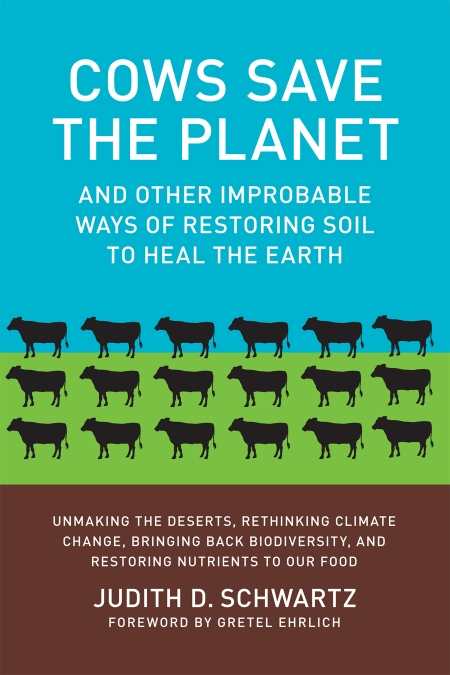Cows Save the Planet
And Other Improbable Ways of Restoring Soil to Heal the Earth
Diverse, approachable book outlines creative solutions to improving the quality of land and food.
Could it really be this easy? Improve soil fertility, preserve biodiversity, reduce obesity, and halt climate change by having more cows graze more land to help “fix” more carbon into the soil? Well, solving the world’s problems may not be quite that easy, but journalist Judith Schwartz raises these and many equally intriguing questions in Cows Save the Planet: And Other Improbable Ways of Restoring Soil to Heal the Earth.
Her book focuses on sustaining and improving the quality of soil, as well as the economic, environmental, and societal benefits we could realize by making that change. Around the globe, topsoil is lost at an alarming rate: up to forty times faster than we’re generating it (in China and India, particularly). The consequences include a rapid increase in deserts, droughts, floods, and wildfires, not to mention a loss in the fertility of soil and the nutritional quality of food.
The losses occur rapidly, but the solutions can work almost as quickly. The soil can be rebuilt from the bottom up, and nature can heal itself with surprising efficiency. For instance, undergrazing can damage the soil as much as overgrazing. Study the historical movements of herds of grazing animals over the grasslands and plains of much of the globe, and adjust livestock and land management principles accordingly, the author suggests. Allow for the organic material, natural microbes, and insect life that facilitate plant diversity and soil enrichment. The resulting impact will be far-reaching and transformational on the land, climate, and crops.
Schwartz refers frequently to the holistic management principles outlined by agriculturist Allan Savory, views that some consider controversial. Schwartz does not attempt to bridge the gap between these holistic ideals and current practices in the industrial food complex but instead grounds her view in narratives of earnest farmers and ranchers from Australia to Vermont who put these soil management principles into practice.
A journalist who has written on marriage, therapy, and other diverse topics, Schwartz tackles complex topics such as the chemistry of the carbon cycle and photosynthesis and counters the myths about cows and methane with an accessible, conversational voice. Her study is lucid, enlightening, and often surprising. It is also an enjoyable, compelling read that will appeal to a wide audience, offering hopeful and creative solutions to some of the most daunting questions of our day.
Reviewed by
Kristen Rabe
Disclosure: This article is not an endorsement, but a review. The publisher of this book provided free copies of the book to have their book reviewed by a professional reviewer. No fee was paid by the publisher for this review. Foreword Reviews only recommends books that we love. Foreword Magazine, Inc. is disclosing this in accordance with the Federal Trade Commission’s 16 CFR, Part 255.

